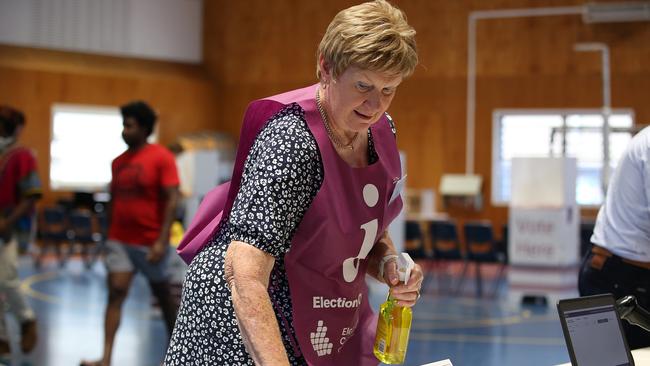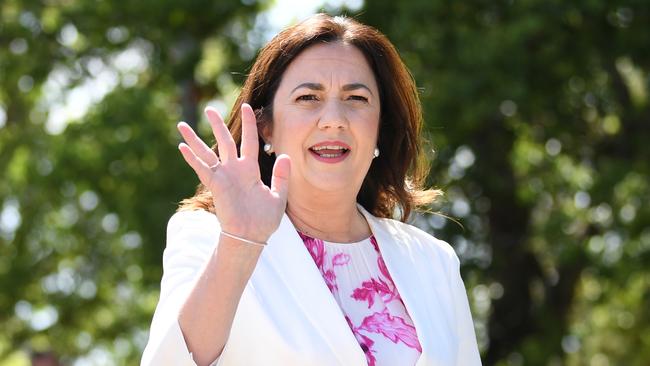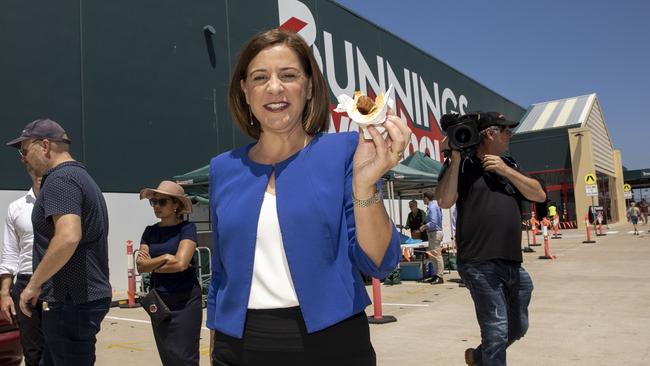A longer term and a pandemic meant state election 2020 was always going to be a bit different
Dr Paul Williams unpacks the reasons the 2020 Queensland Election campaign was so different from previous years.
QLD News
Don't miss out on the headlines from QLD News. Followed categories will be added to My News.
THE election campaign for the 57th Queensland Parliament ended just as it began – without the colour and movement we usually see in hard-fought Queensland polls.
Maybe it because the election date was known long in advance – this is Queensland’s first fixed, four year term – or maybe COVID-19 has so darkened our collective mood that no one’s really interested in political razzle dazzle.
PALASZCZUK RETURNED AS PREMIER
PALASZCZUK NO LONGER ‘ACCIDENTAL PREMIER’
Even so, this election will be studied for years to come. Notwithstanding the Northern Territory and the ACT, Queensland is the first state to go to the polls amid the pandemic, and this election is the first head-to-head contest anywhere in Australia where both the major parties are headed by women.

In an environment where voters face the deepest economic crisis in 90 years – and the most alarming health emergency in more than a century – it was also expected that some campaign rules would be rewritten.
And to some extent they were. This campaign saw a record number of candidates (including a record number of women) and a record number of electors voting before polling day.
It’s also curious that such staple issues as health policy or coal mining or education budgets should barely cause a campaign ripple.
Qld election 2020: Labor tipped to win Queensland, latest poll reveals
Yet the really interesting point might be that we no longer have an ‘election day’ but, rather, an ‘election period’ that spans a couple of weeks of ‘pre-polling’.
That development alone has seen a shift in the way the parties campaign. Forced to ‘front-load’ their campaigns with big promises long before pre-polling begins, we’ve also seen the parties engage social media like never before.

In short, there is no single political channel or audience, just like there’s no single political message. And that can make a voter’s decision all the harder.
But some things never change, including the fact Queenslanders like three things in their politicians.
The first is a demand for strength in their leaders. Labor’s Annastacia Palaszczuk framed herself and her government as ‘strong’ for a tough COVID-19 border policy, while the LNP’s Deb Frecklington – despite her critics’ low expectations – showed she’s made of sterner stuff when she took the economic fight up to Labor.
Then there’s Queenslanders’ love of the regions where more people live outside the capital of Brisbane than within it. It’s Politics 101 that Queensland premiers must pay homage to the north and west of our vast state if they have any desire to succeed. That’s why we saw both Palaszczuk and Frecklington, decked out in hard hats and hi-vis vests, spend as much time in cities like Townsville as in southeast.

Last, Queenslanders demand their governments build. Whether it’s a pledge to construct highways or rail lines or irrigation networks or airconditioned classrooms, in many ways this campaign – including its ‘law and order’ pitch – is straight out of the Queensland election manual.
Dr Paul Williams is a political scietntist and senior lecturer Griffith University
Originally published as A longer term and a pandemic meant state election 2020 was always going to be a bit different

